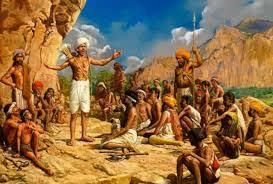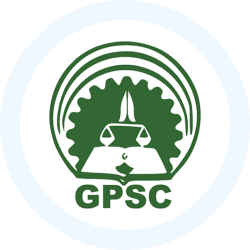GPSC (Goa) Exam > GPSC (Goa) Notes > Goa State PSC (GPSC) Preparation > Workers, Peasant and Tribal Movements in Goa
Workers, Peasant and Tribal Movements in Goa | Goa State PSC (GPSC) Preparation - GPSC (Goa) PDF Download
Tribal Movement

- Tribal communities in India actively participated in movements that were aimed at resisting colonial forces and addressing internal oppressors.
- These movements can be categorized into two main types:
- Movements targeting specific oppressors within their communities, such as landlords, money-lenders, and government officials.
- Movements that intertwined with the Indian National Movement, aligning their struggles with the broader fight for independence.
- The tribal movements during the period from 1778 to 1948 can be categorized as anti-colonial, as they were primarily directed against classes that emerged due to British colonialism and collaborated with the tribals.
- More than 70 tribal revolts occurred during this time, reflecting varying degrees of anti-colonial sentiment.
- Tribals, feeling exploited and oppressed, initiated revolts against their perceived enemies, including landlords, money-lenders, thekedars, missionaries, and European government officials.
- These movements were responses to encroachment on tribal lands, evictions, annulment of traditional rights, rent hikes, land transfers, and the abolition of feudal land ownership.
- Initially focused on social and religious issues, these movements later aligned with the broader National movement and the no-tax campaign.
- Tribals armed themselves with traditional weapons like bows, arrows, lathis, and axes, often resorting to violence against oppressors.
- Despite their resistance, most movements were brutally suppressed by the government, leading to the imposition of British policies detrimental to tribal interests.
- Classification of Tribal Movements
- Non-Frontier Tribes: Constituting 89% of the total tribal population, these tribes were mainly located in central India, West-Central India, and Andhra. Examples include Khonds, Savara, Santhal, Munda, Oraon, Koya, Kol, Gond, and Bhil, who engaged in significant uprisings.
- Frontier Tribes: Found in the seven North-eastern frontier states of Nagaland, Arunachal Pradesh, Meghalaya, Assam, Manipur, Mizoram, and Tripura.
Causes of Tribal Movements
Tribal movements were triggered by various factors, including:
- Impact of Land Revenue Settlement: The imposition of land revenue settlements led to the expansion of agriculture by non-tribals into tribal areas, eroding traditional tribal joint ownership and increasing socio-economic disparities within tribal societies.
- Influence of Christian Missionaries: Christian missionaries introduced socio-economic and cultural changes to tribal communities, often being perceived as agents of colonialism. Their pacifist stance during turbulent times sometimes led to conflicts with rebels.
- Growth of Government Control Over Forest Lands: Increasing demand for resources like timber for the royal navy and railways resulted in the government's establishment of the Forest Department in 1864 and the implementation of forest acts, leading to a monopoly over forest lands. Shifting agriculture, a common practice among tribal groups, was banned in reserved forests from 1864 onwards, with restrictions imposed on timber and grazing activities.
- Influx of Non-Tribals and Loss of Tribal Land: Settlement expansion attracted non-tribals to tribal regions, exploiting tribal communities and displacing them from their lands, forcing some into agricultural labor.
- Tribal Uprisings and Resistance: Tribal uprisings often stemmed from grievances against landlords imposing taxes, police oppression, new regulations, exploitation by traders, and restrictions on traditional practices like shifting cultivation. Rebellions targeted outsiders, local rulers, and British-supported figures, leading to movements like Meli, Hool, and Ul-Gulan.
- Introduction of Private Property Concept: The introduction of the concept of private property allowed for the buying, selling, and mortgaging of land, resulting in tribal land loss and further marginalization.
Tribal Movement in Goa
- In 1974, for the first time in tribal history, tribes in Goa vocalized their rights at Rajendra Prasad Stadium, Margao, demanding inclusion in the Schedule list.
- During the 1980s, the GAKUVED Federation spearheaded movements calling for scheduling and government support for community upliftment.
- In 1987, a significant protest occurred where the GAKUVED Federation marked Jawaharlal Nehru's birthday by symbolically protesting with black cloth strips.
- Continued agitation over the years led to a major convention in August 1989 at Navelim under the Mull Goenkarancho Ekvott banner.
- The Goa State Assembly passed a resolution in 1994 to include Gawdas, Kunbis, Velips, and Dhangars in the Schedule list, but it awaited central government action.
- Intensifying unrest in 2000 resulted in a large-scale tribal march in Panjim, drawing attention to the community's demands.
- In response to the government's inaction post the 2000 march, the GAKUVED movement mobilized various organizations, forming the Goa State Schedule Tribe Action Committee.
- The Committee organized four key public conventions in different regions to amplify the tribal inclusion cause.
- A petition was filed through the South Goa MP, leading to a Parliamentary committee visiting Goa to assess the tribal situation.
- Based on these discussions, the Parliamentary Committee recommended the inclusion of Gawdas, Kunbis, Velips, and Dhangars in the Scheduled list of the Constitution.
- The media played a crucial role in supporting the movement, with local newspapers and national media outlets like Doordarshan and All India Radio highlighting the tribal agitation and its demands.
- Print and electronic media provided extensive coverage, raising awareness and garnering support for the tribal community's cause.
Labour Movement in Response to Industrialisation
- Labour movement arose as a natural response to the challenges brought about by industrialisation, leading to various labor-related issues.
- Problems stemming from industrialisation included the employment of women and children in strenuous tasks, extended working hours, meager wages, inadequate facilities, poor working and living conditions, excessive workloads, and harsh treatment of workers.
- These issues were primarily a result of employers' pursuit of maximum profits, the shift from small-scale domestic production to large-scale industrial setups, rural-to-urban labor migration, and political factors.
- Consequently, there emerged a necessity to establish organizations that could safeguard laborers from the negative impacts of industrialisation.
- The labor movement was not solely a response to the adverse effects of industrial life but also an effort to harness society's competitive forces for enhancing the overall conditions of workers.
- Trade unionism in India displayed a varied and intricate structure, lacking a singular pattern.
- Following the establishment of factories in India in the late 19th century, organized labor movements began to take shape, with N.M. Lokhande playing a crucial role.
- The aftermath of World War I, alongside mass movements led by political figures, the International Labour Organization, and the Russian Revolution, catalyzed the growth of the labor movement.
- The Madras Textile Labour Union, formed in 1918, marked the inception of trade unions in India, with the formation of the first Central Organization, A.I.T.U.C, in 1920.
- By 1924, India had eight Federations of labor, accompanied by legislative measures like the Indian Factories Act (1923), Indian Mines Act (1923), and the Trade Disputes Act (1929).
- The establishment of the National Trade Union Federation (N.T.U.F) in 1933 was pivotal, followed by the emergence of various Central Organizations such as I.N.T.U.C (1946), H.M.S (1948), and U.T.U.C (1949).
- Indian trade unions have garnered significant prominence, providing a platform for voicing views, policies, and ideologies at both state and national levels through the Standing Labour Committee and the Indian Labour Conference.
- Trade unionism in Goa traces its roots back to the final years of Portuguese rule, initially manifesting as sporadic expressions that evolved into more structured unions post the liberation of Goa.
- According to the Statistical Handbook of Goa (2000), in 1995, 184 unions were registered, boasting a membership of 73,084 members by year-end. However, in 1997, although the number of registered unions increased to 206, the total membership declined to 39,411.
Question for Workers, Peasant and Tribal Movements in GoaTry yourself: Which factor did not contribute to the tribal movements in India during the period from 1778 to 1948?View Solution
Peasant Movements in Pre-Independence India

- The peasant movements in pre-independence India set the stage for significant agrarian reforms following independence. One pivotal change was the abolition of the Zamindari system, which significantly weakened the authority of the landed elite, contributing to a fundamental shift in the agrarian landscape.
- The growth of peasant movements exerted substantial pressure on the Indian National Congress, influencing its policies and agendas.
- The Karachi Congress Charter, however, failed to adequately address the concerns of the peasantry, highlighting a disconnect between the political leadership and grassroots issues.
- Political pressure from bodies like the Kisan Sabha succeeded in pushing for agrarian reforms, as seen in the Faizpur Congress program.
- Despite this, the Congress, influenced by the native bourgeoisie, hesitated to make radical concessions to peasant demands, fearing repercussions on the interests of the zamindars.
Challenges Faced by Peasants
- Peasants in Zamindari areas endured high rents, illicit levies, forced evictions, and exploitative labor conditions.
- Ryotwari regions faced heavy land revenue imposed by the government, exacerbating the financial strain on farmers.
- Financially strained farmers often resorted to borrowing from local moneylenders, who exploited their vulnerabilities by charging exorbitant interest rates.
- This financial strain sometimes led farmers to pledge their assets like land and livestock, which could be seized by moneylenders in cases of non-repayment.
- Gradually, many cultivators found themselves reduced to tenants-at-will, sharecroppers, or landless laborers due to oppressive practices by landlords.
Peasant Uprisings and Responses
- The oppressive actions of zamindars, coupled with excessive British land revenues, incited spontaneous peasant uprisings across various regions.
- Periodic famines and economic downturns in the late 19th century further fueled discontent, leading to numerous peasant revolts.
- Peasants, recognizing the colonial state as their primary adversary, often resisted exploitation through various means.
- In desperate circumstances, some peasants turned to criminal activities such as robbery, dacoity, and what can be termed as social banditry as a response to intolerable conditions.
The document Workers, Peasant and Tribal Movements in Goa | Goa State PSC (GPSC) Preparation - GPSC (Goa) is a part of the GPSC (Goa) Course Goa State PSC (GPSC) Preparation.
All you need of GPSC (Goa) at this link: GPSC (Goa)
Related Searches
















